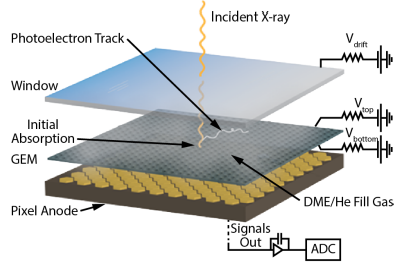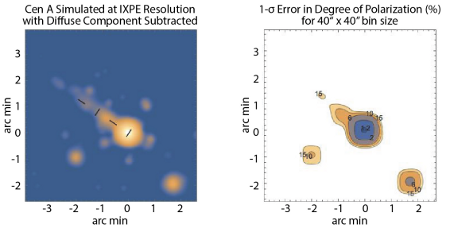How Do We Detect Polarized X-ray Light?
IXPE will have three identical X-ray telescopes, with polarization detectors at each focus.
The detectors, called Gas Pixel Detectors (GPD) are based on proportional counters
(see Mullard Space Science Laboratory's Introduction to Proportional Counters).
Polarized X rays interacting with a gaseous medium create photoelectons that are preferentially emitted in the polarization direction.
Photoelectron tracks mark the path of the photoelectron from the position of the initial X-ray interaction to its stopping point.
Analysis of the distribution of the initial directions of the tracks gives the degree of polarization and the position angle from the incident X ray.

The Benefits of Imaging
The brightest extended X-ray sources can be polarimetrically imaged by IXPE. Examples include an Active-Galactic-Nucleus (AGN) jet,
Pulsar Wind Nebulae (PWNe), and shell-type Supernova Remnants (SNR). Polarization maps of these sources will show the structure of the magnetic field of X-ray emitting regions,
which may be different from regions emitting in radio or the visible portion of the spectrum.
Imaging also yields a more sensitive measurement of a point source embedded in an extended source than a non-imaging system.

For more information, see the SPIE Edinburg 2016 paper and the microarticle for Results in Physics.

